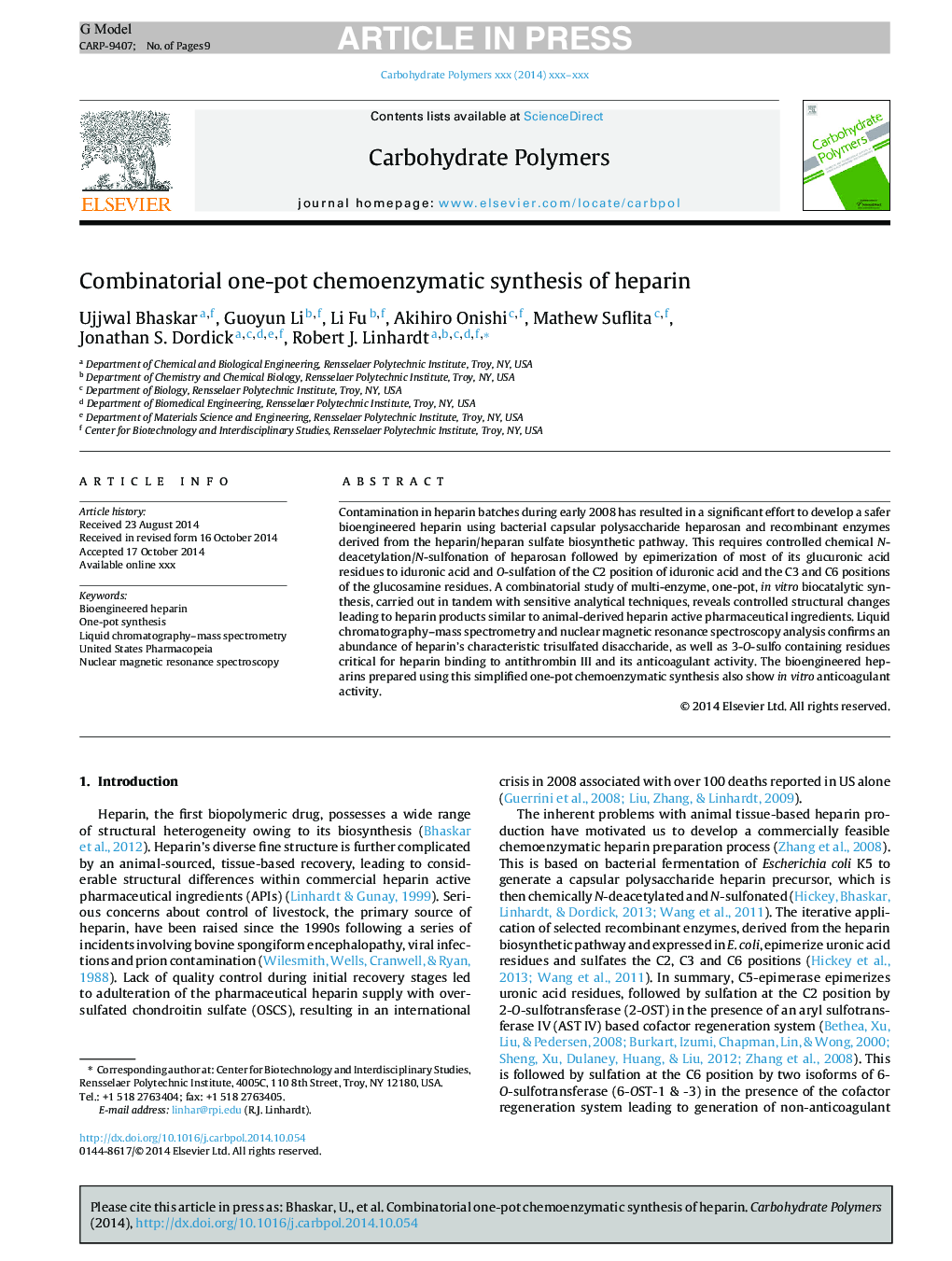| Article ID | Journal | Published Year | Pages | File Type |
|---|---|---|---|---|
| 7789364 | Carbohydrate Polymers | 2015 | 9 Pages |
Abstract
Contamination in heparin batches during early 2008 has resulted in a significant effort to develop a safer bioengineered heparin using bacterial capsular polysaccharide heparosan and recombinant enzymes derived from the heparin/heparan sulfate biosynthetic pathway. This requires controlled chemical N-deacetylation/N-sulfonation of heparosan followed by epimerization of most of its glucuronic acid residues to iduronic acid and O-sulfation of the C2 position of iduronic acid and the C3 and C6 positions of the glucosamine residues. A combinatorial study of multi-enzyme, one-pot, in vitro biocatalytic synthesis, carried out in tandem with sensitive analytical techniques, reveals controlled structural changes leading to heparin products similar to animal-derived heparin active pharmaceutical ingredients. Liquid chromatography-mass spectrometry and nuclear magnetic resonance spectroscopy analysis confirms an abundance of heparin's characteristic trisulfated disaccharide, as well as 3-O-sulfo containing residues critical for heparin binding to antithrombin III and its anticoagulant activity. The bioengineered heparins prepared using this simplified one-pot chemoenzymatic synthesis also show in vitro anticoagulant activity.
Keywords
Related Topics
Physical Sciences and Engineering
Chemistry
Organic Chemistry
Authors
Ujjwal Bhaskar, Guoyun Li, Li Fu, Akihiro Onishi, Mathew Suflita, Jonathan S. Dordick, Robert J. Linhardt,
